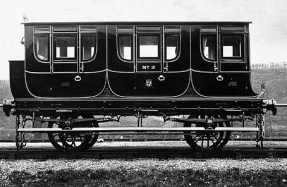
Historically one of the periods that has always fascinated the author is the transition period between steam and diesel on the British Railways network. In this sense I have confined the era to the one of main line dieselisation between 1958-1968 although it occurred from 1954 onwards in parts of the UK when applied to secondary and branch lines. It was not only a change in traction in this period, but a plethora of other changes which saw the diminution of the-then BR network, of course, with the publication of The Reshaping of British Railways report in March 1963. Certainly, a title which the Harvard business school would have embraced, one would imagine, with its euphemistic terminology, an early exemplar of 'management speak'.
What its critics overlook, however, was that in many instances this was a culmination in the BR closure programme which had steadily gathered pace in the period immediately prior to Beeching. That the scope of the proposals and indeed in many instances the implementation of this policy was 'unprecedented' is not doubted by the author, but if it had been left solely to those in the higher echelons of BR management a more evolutionary closure programme would have ensued, one suspects. Some support for this stance is provided in the chronology below, arguably. In this instance the geographical sphere refers to the author's location which is Thrapston in Northamptonshire, approximately halfway between Peterborough and Northampton to which a 35–40-mile radius has been applied. One or two lines may have escaped the author's attention but show the general picture. It is true that this only applied to passenger closures, but the majority of these lines only lingered for the residual freight traffic for a short period after this.
Pre-Beeching
1. Midland & Great Northern, February 1959 2. Kettering–Cambridge, June 1959 3. Higham Ferrers–Wellingborough, June 1959 4. Leamington Spa–Rugby, June 1959 5. Stamford–Essendine, June 1959 6. Seaton Junction–Uppingham, June 1960 7. Bedford–Hitchin, December 1961 8. Northampton–Bedford, March 1962 9. Leicester–Rugby, March 1962. 10. Cambridge–Mildenhall,,June 1962




